Heritage and Preservation
ASF DOUGLAS-HAMILTON ARCHIVE
NYC Landmarks 50+ Alliance
Alexander Hamilton's home, the Grange
Public Catalogue Foundation
The Guards Museum, London
Clan Hannay: Sorbie Tower
Lord & Lady
Malcolm Douglas-Hamilton Archive
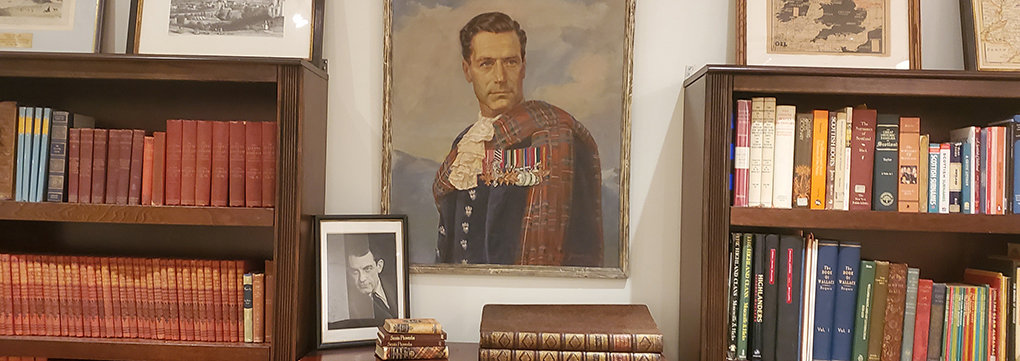
On the 46th Anniversary of the first New York Scotland Week organized by the American Scottish Foundation in New York during November 11 - 19 1974, the Foundation proudly announces the deeding of a sizable trove of letters, photographs, manuscripts (unpublished), books, newspaper clippings, documents relating to the work of our founders Lord Malcolm Douglas-Hamilton and his wife, Lady Natalie Douglas-Hamilton.
The donation includes several pictures and prints and two magnificent portraits of Lord Malcolm and Lady Natalie.
Lord and Lady Malcolm Douglas Hamilton had an immense impact on public life, both in the United States and United Kingdom.
ASF offers special thanks to Lady Natalie’s grandchildren and her heirs, who made this possible. Decades after Lord Malcolm’s death in 1964 and seven years after Lady Natalie’s passing in 2013, their legacy literally lives on in the work of the American Scottish Foundation. To Learn More. . .

The Scots Who Built New York
NY Landmarks 50+ Alliance

The American-Scottish Foundation® is honored to have been invited to join the Landmarks 50 project and to develop THE SCOTS WHO BUILT NEW YORK'S LANDMARKS project celebrating the contribution of Scottish Americans to the building of New York.
With research undertaken by Architect and Architectural historian John Kinnear, ASF has developed a photographic series of six talks (to date) exploring the huge contribution of Scottish-Americans to the building of New York.
Read more here, together with news of supporting events...
The first ASF talk was on work of Charles Follen McKim, of the legendary McKim, Mead & White. The second talk was on
John McComb, Jr. to be followed by a third and fourth on the
impact of the visionary Andrew Carnegie and his legacy.
The fifth talk was on The Modernists and the sixth, in February 2017, will focus on the early period 1664-1750.
ASF has now looked at the impact of 300 years of the Scottish-American architecture in the developing of New York. Having completed the research and presentations from 1664 to the Modernists of today, we now enter Phase Two of the project, bringing this important and fascinating history to a wider audience through:
- The Scots Who Built New York City Walking Tour App
- The Scots Who Built New York City Map
- and ultimately, The Scots Who Built New York Coffee Table Book
Furthermore, we have been asked to expand the project into the
Scots Who Built America's Great Cities. A talk on Carnegie in Washington DC was the first of these.

All is in honor of the 50th Anniversary of Landmarks Preservation Law in 2015.
Alexander Hamilton's home, the Grange
The Grange, Alexander Hamilton’s home, has been moved by the National Parks Service to St. Nicholas Park. A major renovation of what is now designated a National Monument, the Grange is newly located in land which was once part of Hamilton’s original estate.
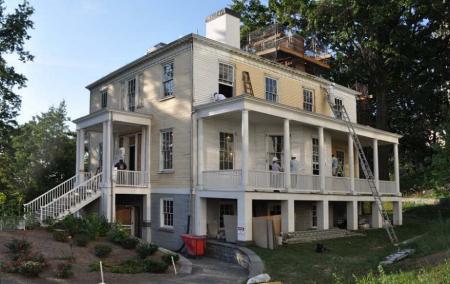
In October Hamilton Grange was reopened to the public after
extensive renovation by the National Parks Service. The ASF is taking
the lead in the establishment of the Hamilton Garden, with the first trees to be planted shortly.
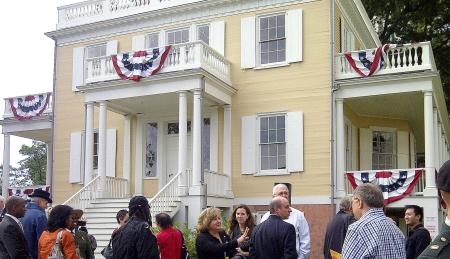
Opening Day
During 2011, the ASF was instrumental in bringing together the Scottish and American Hamilton family descendants for the first time in 300 years. A private visit was also arranged to view Hamilton Grange.


Grant Hamilton (L) and Douglas Hamilton and Heather L. Bain (R)
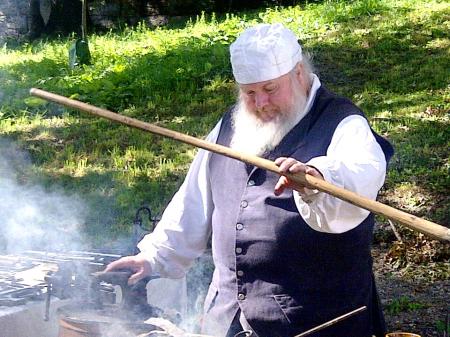
A blacksmith at work on The Grange
Hamilton named his home after the Grange in Stevenson, Scotland, the Hamilton’s family seat since the 16th century.
The ASF has been working with the American Friends of the Georgian Group to help create and fund Scottish-inspired plantings that will now be a part of the landscaping.
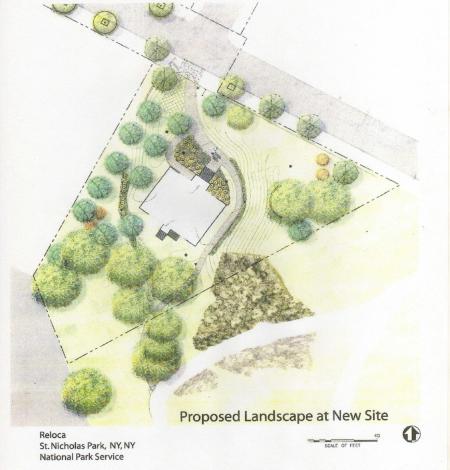
The drawing below by John Kinnear AIA is based upon writings from Alexander Hamilton’s diary in which he draws this 18-foot flowerbed and plants to be in it.

To date, events have taken place at Federal Hall and the Penn
Club in support of this initiative.
To help in the development of the plantings at the Grange, please download the Environmental Projects Donation Form here.
All donations are tax-deductible to the extent of the law.
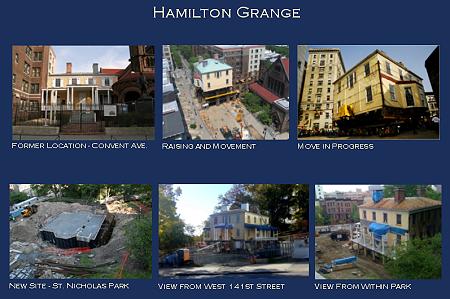


![]()
December 12, 2011
By Robbie Whelan; photographs by
Daniella Zalcman

The Hamilton Grange, the upper Manhattan house built by Alexander Hamilton, reopened to the public in September after a half-century of work. that included a relocation.
Owners of historic property regularly complain about dealing with government landmark agencies, which can be sticklers for keeping New York's great buildings looking the same for the ages.
These critics can take some consolation by looking at the recent rehabilitation of Hamilton Grange, the upper Manhattan house built by founding father Alexander Hamilton. It shows just how persnickety a preservation project can be.
The story dates to 1962 when Congress agreed to give historic monument status to the house on the condition that the National Park Service relocate the building and recreate Hamilton's vision of a country retreat in Harlem away from the bustle of the city. Nearly a half-century later, the job is done: The Park Service went as far as spending $14.5 million to jack the house up more than 40 feet and roll it down the road from its previous location, a cramped lot on Convent Avenue, so that the view from the porch more resembles what Alexander Hamilton saw when he walked on it more than two centuries ago.
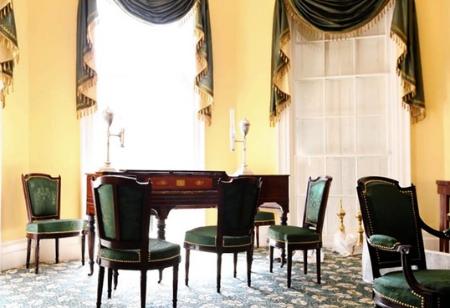
The sitting room with the original piano
The house, which has museum displays on the ground floor and a recreation of its original interiors above, reopened to the public in September, and from an architectural and landmark perspective is an exciting, fascinating success. Walking south along St. Nicholas Avenue from the B train stop, one turns the corner at 141st, starts westward up the hill, and is suddenly transported back when Harlem's map was spotted with country estates, streams, fields, farms and hunting grounds.
Other historic redevelopments, of course, don't have to go through this kind of scrutiny because landmark agencies give commercial projects more latitude. Last week, for example, the city Landmarks Preservation Commission indicated it was close to approving developer Jared Kushner's plan to build a glass penthouse on top of the landmark Puck Building in SoHo.
Earlier plans by Mr. Kushner were rejected because the changes would have been too visible. The latest version "has calmed down," Frederick Bland, an architect and one of the commissioners said last week.
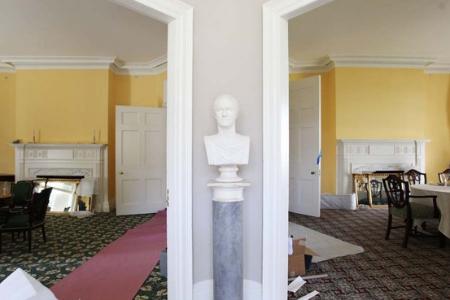
A bust of Hamilton in the main entryway
A trip to Hamilton Grange is a reminder why it's important to do this. In the middle of a dense, highly residential part of central Harlem known as Hamilton Heights now sits a genteel, federal-style pinewood cottage, with peach siding and thin, graceful white columns framing its veranda, overlooking the park's sloping swath of green.
The original architect was famed Federal-style designer John McComb Jr., who also was the architect of Gracie Mansion and New York's City Hall. Mr. McComb built at the nadir of the Federal period of architecture, which, like the Georgian before it, suggested an American style based on the classical proportions of ancient Greece, but which lightened its architectural elements, adding graceful flourishes and swapping smooth stone and wood materials for heavy Georgian bricks.
Hamilton Grange is a shining example of the style. Built with an almost aggressive symmetry—Mr. McComb added two non-functional chimneys to the building just to balance out its roof, and the interior lobby presents the anteroom and the dining hall as mirror images of one another, arranged around a bust of Hamilton himself—the house suggests a rationality that isn't accidental.
The Founding Fathers sought to express their sense of Enlightenment-era logic in everything they did, from the Constitution to the houses in which they entertained.
Hamilton Grange's new home isn't the original site of its construction, which was near where 143rd hits Amsterdam Avenue today, and because of encroaching street grid and the development of Harlem, couldn't be. Its front entrance no longer faces southward, as the original did, and some of the original conditions on the interior were impossible to re-create, because historians couldn't divine the intentions of Mr. McComb.
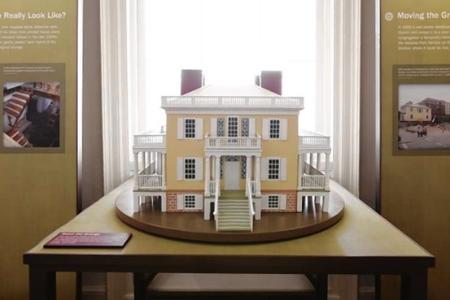
A scale reproduction of the house
"What's important to a historian is to try to get history right, or as close to right as you can, whether it's writing a book, making a film, or relocating a house," says Steve Laise, chief of cultural resources for the National Park Service's Manhattan branch. "In its former location, it looked like nothing at all, the way it was crowded in … The reality of what the home is now is much close to its historical reality. It's about honoring Hamilton's intent."
Historical architects have restored the house's front and back porches, which were lost in the Convent Avenue location, giving the cottage, which is actually quite small, a bit of the sprawling affect of a country estate.
On the location question, the Park Service has made the best out of a bad situation. Mr. Laise says the National Park Service considered at least four sites for the house, including Central Park, Riverside Park, the south part of the City College campus, and near the Dyckman farmhouse in Inwood. It settled on the current location because, among other reasons, it is within the footprint of Hamilton's original, 33-acre estate.
Another effect of the relocation is that the house gives new purpose to a public park: a conduit to history. Park planners have long worried that St. Nicholas Park, a 23-acre swath of green that runs north-to-south alongside the campus of City College of New York, had become a dodgy no-man's-land after daylight hours and had been looking to add more positive, public use to it.
Alexander Hamilton lived in the Grange for only two years: The house was completed in 1802, and he was killed in 1804. But thanks to good planning and the National Park Service's right-sized sense of the importance of historical architecture, Hamilton's version of New York City lives again.
The Museum of American Finance and American-Scottish Foundation® Sponsor Exhibition Focusing on Alexander Hamilton’s Life and Legacy
June, 2011
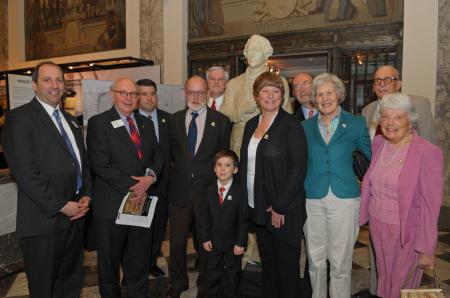
Pictured with Museum of American Finance President David Cowan are members of Douglas Hamilton's family including his son and grandson on the left hand side of Alexander Hamiltons statue - and on his right representing the House of Hamilton is Diana Douglas-Hamilton
Tartan Week acted as a backdrop fo the opening of the Alexander Hamilton Lineage and Legacy exhibit co-sponsored by the Museum of American Finance and the ASF (see news item of March 8, below).
A lecture and reception in historic Wall Street Museum brought together the Scottish and American Hamilton family descendants for the first time in 300 years.
Alexander Hamilton is related through the second Duke of Hamilton to the Foundation's founder, Lord Malcolm Douglas-Hamilton of the Ducal House.
The exhibit celebrates Hamilton's life and accomplishment as one of the founding fathers of America, Secretary of Treasury and economist.
The ASF is working with the New York Parks Department on developing the Hamilton Garden at St Nicholas Park in conjunction with the National Parks Service. A private visit was arranged for the families to visit Hamilton Grange which is now in the final stages of restoration.
Douglas Hamilton noted "The gathering in New York City was a wonderful and memorable event. The American-Scottish Foundation represented Scotland well and made me feel more proud of my Scottish heritage ..."






